Grumman’s Panther Jet Was The Navy And Marine Corps Jet Workhorse of the Korean War
Grumman built several notable fighters, but their F9F Panther was the first jet-powered fighter. One of the workhorses of the Korean War and the very first jet aircraft flown by the Navy’s Blue Angels, the Panther was one of many designs conceived during World War II that relied on the slow pace of turbojet engine development to get off the ground.
Ironically, the genesis of the Panther actually traces back to the two-seat Grumman G-75 design that lost out to the Douglas XF3D-1 Skyknight in 1946.
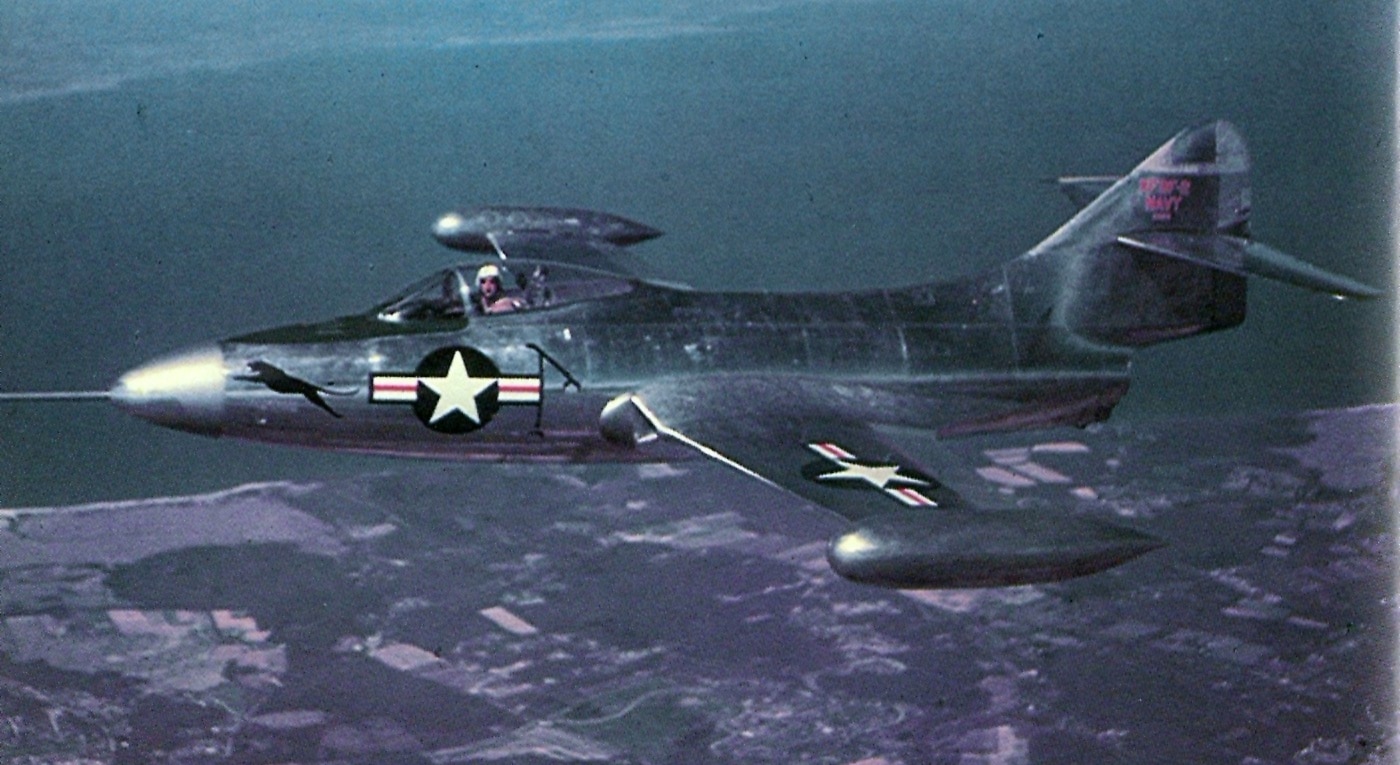
A Different Breed of Grumman Cat
Even though the Navy’s Bureau of Aeronautics (BuAer) issued a contract to Douglas for the F3D-1, they also issued a contract to Grumman for two XF9F-1 (G-75) prototypes in 1946. It has been said that BuAer doubled down when it issued contracts to both companies.
In any case, BuAer agreed with Grumman’s revised plan to develop a different single-seat design (the G-79) under the contract issued for the G-75. That’s how the G-75 became the G-79 (F9F-2) and then became the straight-winged conventional tailplane-equipped F9F Panther.
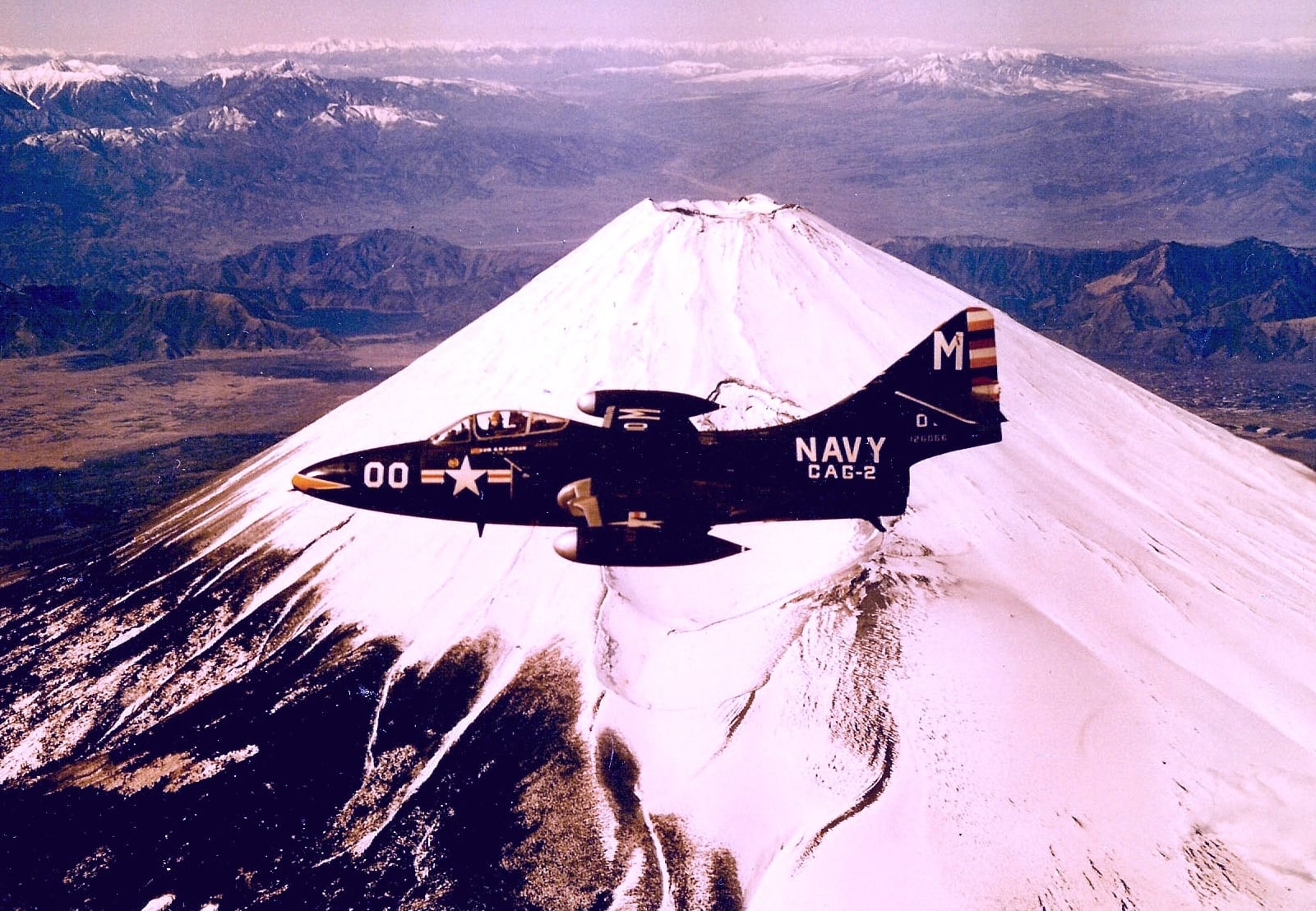
Engine Technology Fails Another Jet Fighter- For a Time
Grumman test pilot “Corky Meyer” flew the prototype on 21 November 1947. However, like all jet-powered fighters in development at the time, the Panther underwent considerable engine development for quite some time, even after production began.
Initially powered by the Pratt & Whitney J42 turbojet engine- a contract-built version of the Rolls-Royce Nene, Panthers were fitted with permanent wing tip tanks to provide enough fuel for the inefficient (read thirsty) jet engines of the time. Irony strikes again: The tip tanks actually improved the Panther’s roll rate.
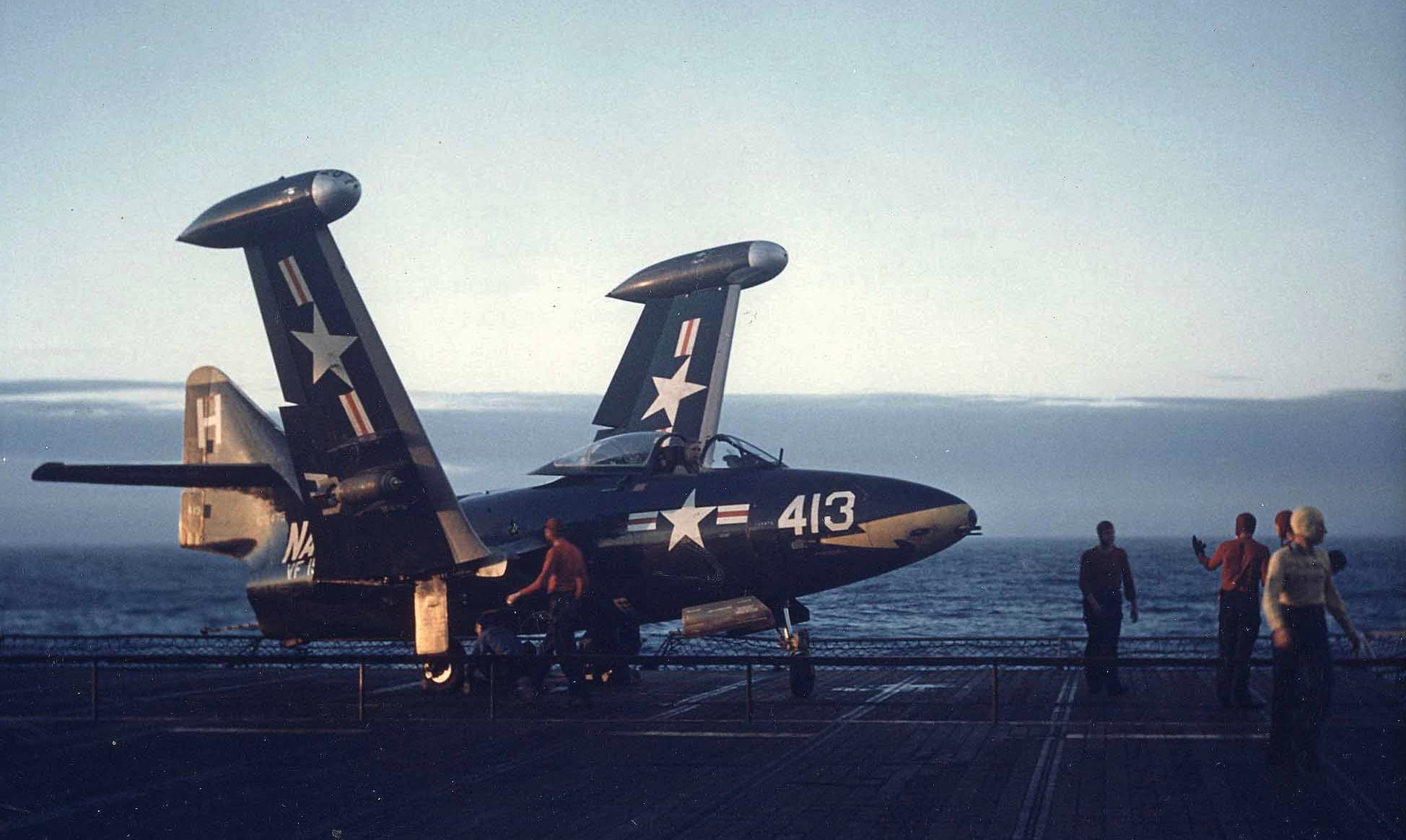
The First Fighter/Attack Guys?
After passing carrier qualification testing, the F9F-2 Panther was cleared to operate from aircraft carriers. Equipped with four 20 millimeter cannons mounted under the nose of the aircraft and capable of carrying bombs on underwing hardpoints and rockets on underwing rails, Panthers were fighter-bombers from the start.
Close air support (CAS) became a primary role for both Navy and Marine Corps Panthers. Early F9Fs experienced tailhook and aft fuselage problems that were so severe that entire aft fuselages were pulled from recovering jets. Grumman fixed these issues before the next major variant of the jet was introduced.
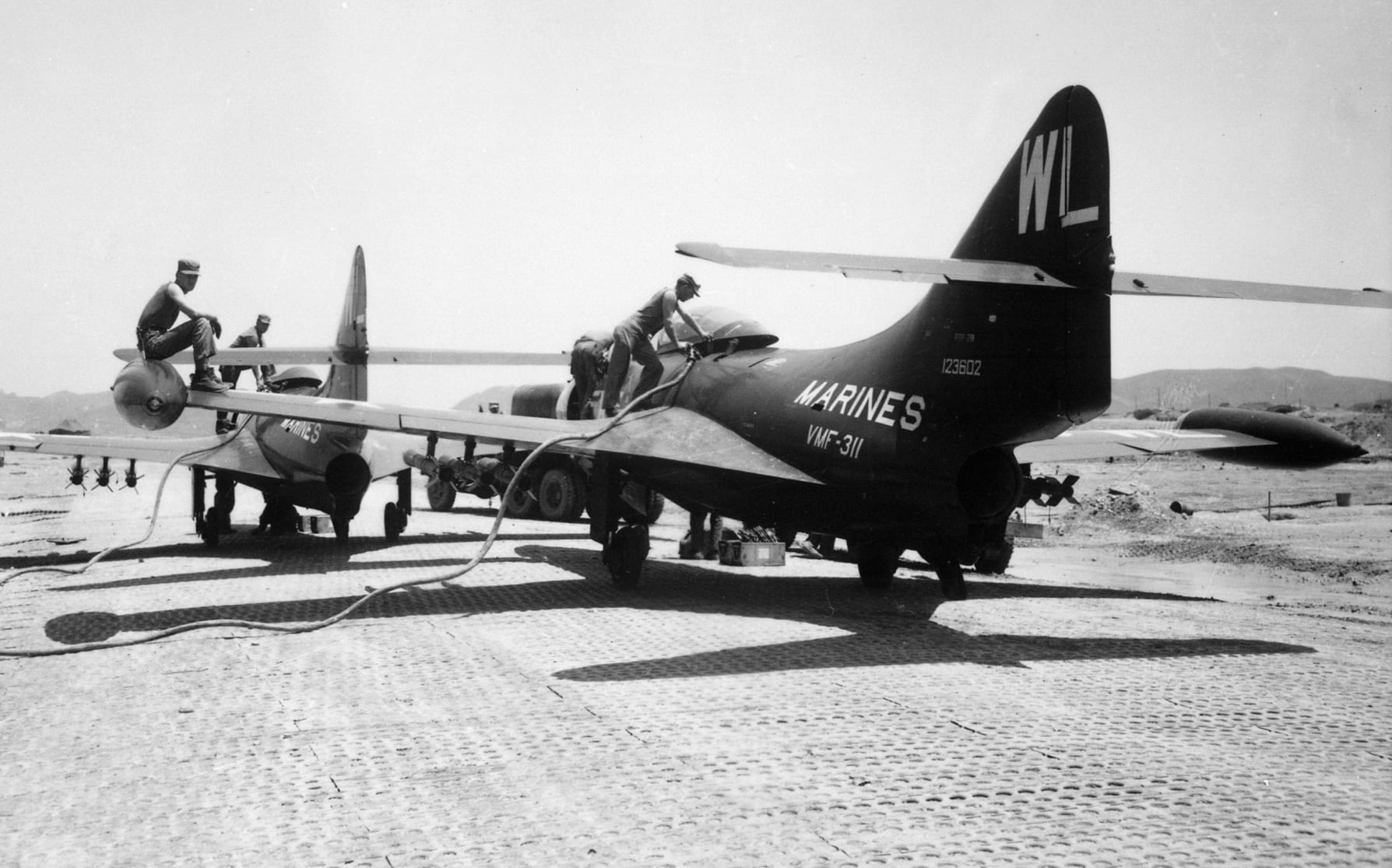
Slower in the Pattern Around the Boat = Good Thing
The F9F-4 was a development of the first jet cat, featuring a longer fuselage to increase internal fuel capacity and a larger vertical stabilizer for improved lateral stability. Originally powered by Allison J33 engines, many F9F-4s later received the tried-and-true P&W J42 engines.
One new aspect of the F9F-4 was the use of pressurized bleed air to simulate higher speeds across the flaps. This modification, utilizing engine compressor stage bleed air, resulted in a nine-knot slower stall speed and a 7-knot slower approach speed. F9F-5s received another thousand pounds of thrust when the stronger P&W J48 engine powered them. Anti-stall fences were mounted just outboard of the wing roots as well.
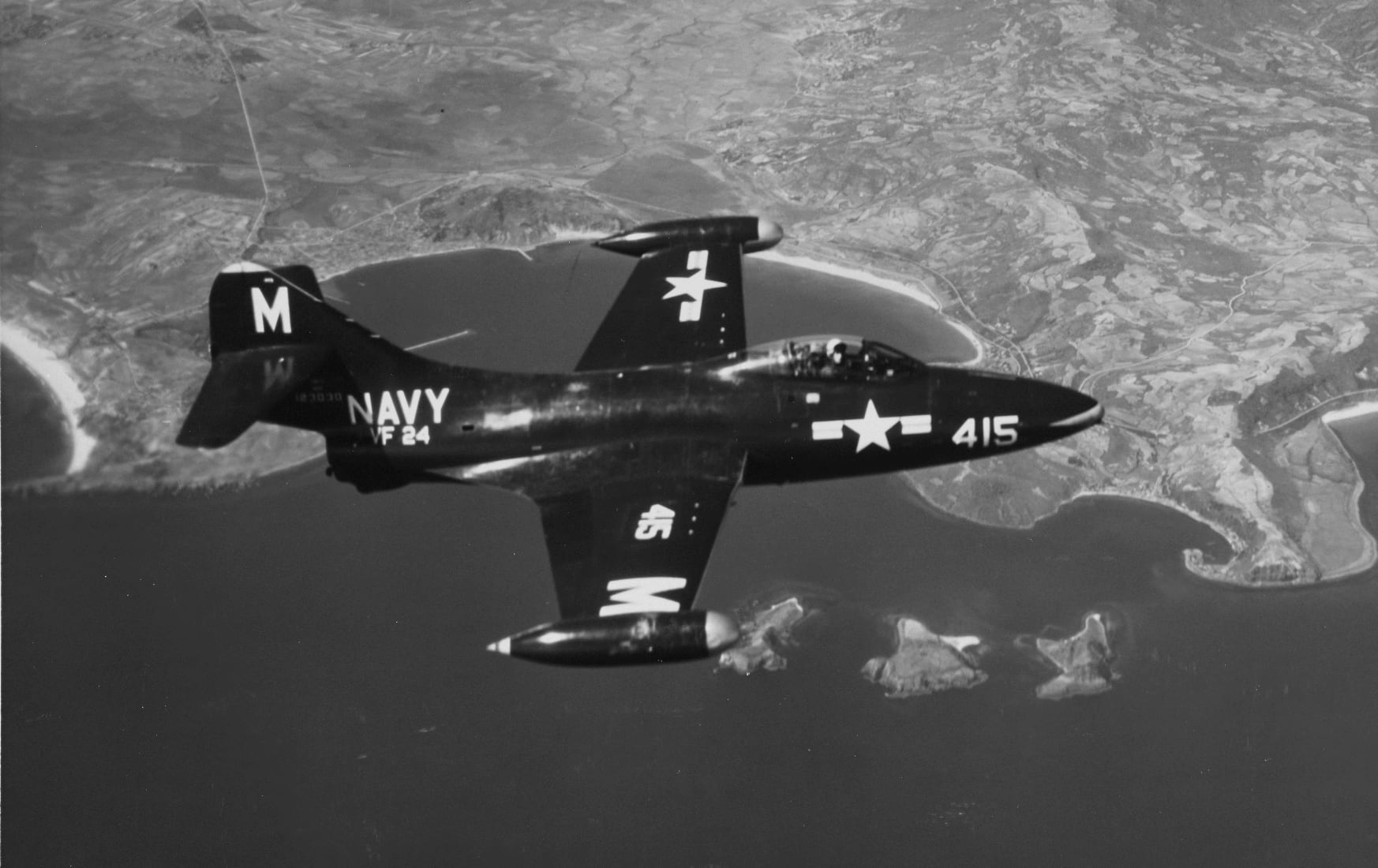
The Panther Heads to Korea
Panthers became operational with VF-51 Screaming Eagles during May of 1949 and VF-11 Red Rippers at Naval Air Station (NAS) San Diego a few months later. During August 1949, VMF-115 Silver Eagles at Marine Corps Air Station (MCAS) Cherry Point received their first Panther jets. The first Navy Panther squadrons to see action in Korea were VF-51 and VF-52 Knightriders. The Marines of VMF-311 Tomcats arrived in Korea first in December 1950, flying their F9F-2B Panthers.
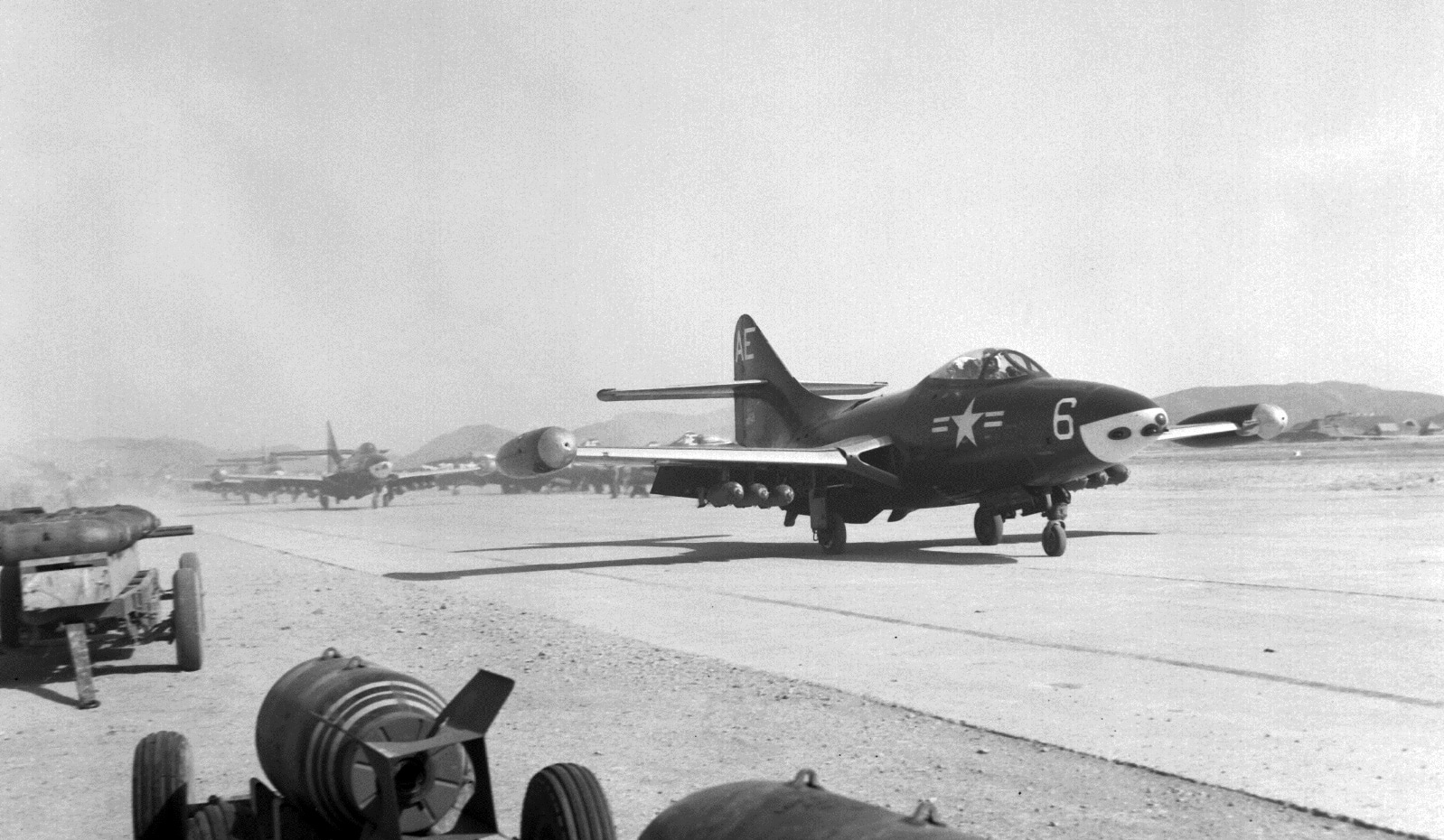

My boyhood idol and later in life a dear friend; Corkey Meyer did the first flight in the Panther as a Grumman Test Pilot. He shared many stories about the Panther and its’s development. I was also blessed to have a friend in John Verdi who flew the Panther in VMF-311 and checked out both John Glenn and Ted Williams for combat when they joined the squadron. Have a thousand stories between these two about the Panther.
[…] The Panther: The F9F Panther Was The First Jet-Powered Grumman Cat Fighter […]